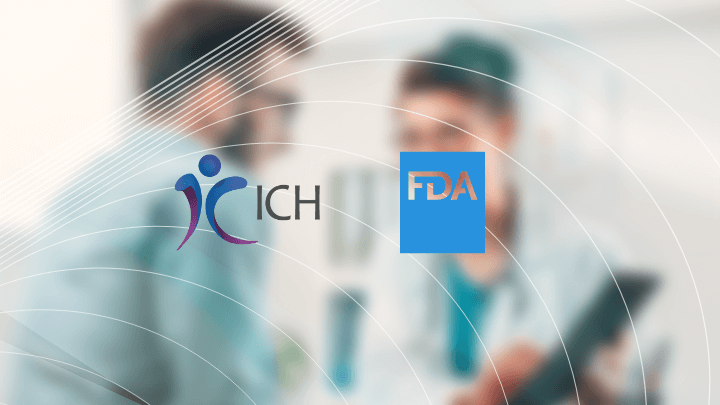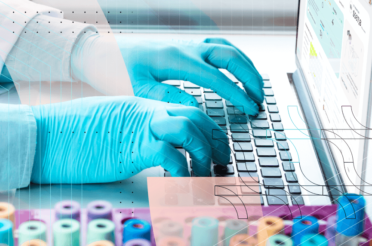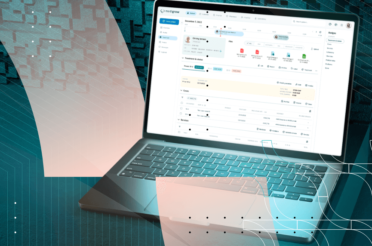In clinical trials, Source Data Verification (SDV) is crucial to checking the data’s accuracy and reliability. It involves comparing the original records of clinical findings with the data in the trial’s case report forms (CRFs).
SDV’s main goal is to find and fix any mismatches. It ensures the data’s quality and integrity, which are vital for the trial’s success.
What is source data verification
SDV is instrumental in upholding good clinical practice (GCP), which is extremely important for clinical research. It helps maintain the ethical conduct of trials and the credibility of data.
SDV ensures data points are accurately taken from the original sources. This thorough process greatly improves data quality. SDV ensures clinical research results are reliable, helps safeguard participants’ health, and maintains the trial’s integrity.
Source documents are key in the SDV process. They include medical records, lab reports, and other records showing a participant’s trial experiences. SDV checks that data in the trial’s CRFs match these original documents. This step ensures the trial data is accurate and complete.
As clinical research changes, the way SDV ensures data quality evolves too. The use of SDV is now more strategic. New methods and technologies are making it more efficient without compromising on the thoroughness of data verification. The continuous improvement of SDV practices shows the clinical research community’s dedication to increasing scientific responsibility.
Regulatory requirements in SDV
The rules for SDV in clinical trials include guidelines from the The Food and Drug Administration (FDA) and other global regulators.
These rules make sure trials follow Good Clinical Practice (GCP) to protect data quality and participant safety.
FDA and good clinical practice
The FDA provides specific guidance for electronic source data in clinical studies, which target sponsors, Contract Research Organizations (CROs), and clinical investigators. It stresses the need to properly capture, review, and keep electronic source data.
This process ensures its reliability, quality, and traceability from source to regulatory submission.
Key aspects of FDA’s guidance include:
- Identification of authorized data originators;
- Creation of data element identifiers;
- Responsibilities of clinical investigators regarding electronic data review and retention.
The guidance encourages using electronic data capture to update and simplify clinical studies. It accurately records and keeps data according to the study protocol.
International regulations and GCP
Besides FDA guidance, the International Conference on Harmonisation (ICH) Good Clinical Practice (E6) sets a worldwide standard for the design, analysis, and reporting of clinical trials.
This guidance highlights the need for accurate data to be checked against source documents. This way clinical trials protect participants’ rights and make the trial data trustworthy.

Discover what role source documents play in the SDV process.
Learn about the significance of using medical records and laboratory reports to provide direct evidence of trial participants' experiences and outcomes.

Informed consent and protocol compliance
Regulatory requirements highlight the significance of informed consent forms and protocol compliance in clinical trials. The informed consent process is critical for ensuring that participants are fully aware of the trial’s nature and risks before participation.
Protocol compliance ensures trials follow the set study plan, which is key for keeping data integrity and participant safety. These factors are vital for ethical trial conduct and the reliability of the data collected.
Best practices for conducting source data verification
Effectively conducting SDV in clinical trials is crucial for data integrity, compliance, and participant safety.
To maximize the benefits of SDV, it’s important to know the best practices. These practices focus on the critical aspects of data monitoring and risk-based monitoring strategies.
Before initiating SDV, you must identify critical data points that are pivotal for study outcomes, such as:
- Inclusion criteria;
- Exclusion criteria;
- Primary and secondary efficacy endpoints;
- Safety data, etc.
This selective method focuses efforts on checking data that greatly affect the study’s integrity and results.
A good monitoring plan should use on-site and remote strategies. It’s advised to use a risk-based monitoring (RBM) system that concentrates resources on high-risk parts of the study. This method makes resource use more efficient while keeping data quality and participant safety.
It’s also crucial to quickly monitor and fix any protocol deviations. This means checking that all entered data are complete and follow the study protocol. Any protocol deviations should be recorded and dealt with using set procedures. This is done to ensure corrective and preventive actions are taken.
SDV must ensure data is correctly copied from source documents to the eCRF or electronic data capture (EDC) system. This involves verifying the data’s legibility, consistency, and timeliness. Auditors and monitors are key in this process. They check for informed consent by following inclusion and exclusion criteria.
Using EHR and EDC systems can improve SDV’s efficiency and effectiveness. These tools support direct data entry, cut down on transcription mistakes, and provide instant data access. It’s vital to keep everyone involved in SDV trained and informed about the latest guidelines and best practices.
Integration of technology
Technology greatly improves data quality in clinical trials through SDV. It affects SDV by introducing new monitoring methods.
Digital health technologies allow for instant data capture and analysis and shorten the gap between data collection and verification. This processing boosts data quality by quickly correcting errors. EHRs and wearable devices make data collection smoother.
The introduction of risk-based monitoring (RBM) strategies marks a major tech improvement in clinical trials. RBM proactively identifies and reduces risks to data quality and participant safety. It uses resources more efficiently by concentrating on the most critical data points and processes that could affect the trial’s result.
Technology also enables retrospective analysis and lets researchers look back at data to find inconsistencies that weren’t clear at first. This can point out ways to improve future trials and help improve data quality and trial methods.
Regarding improving verification processes, blockchain and smart contracts maintain data integrity and original records. They do so by making an unchangeable record of data entries. This stops unauthorized changes, making clinical trial data more trustworthy and reliable.
Using technology in SDV not only boosts data quality but also makes clinical trials more efficient. By automating common tasks and allowing for remote monitoring, technology helps trial sponsors and CROs run trials more effectively. This often happens at lower costs and in less time.
Challenges and solutions
Making sure clinical trial data are complete through effective SDV and SDR practices directly affects the scientific validity of trial results. Correctly spotting and logging adverse events is crucial for evaluating drug safety and effectiveness. High-quality data help with regulatory approvals and advance medical knowledge and care.
Yet, reaching these outcomes faces some challenges, such as:
- Input errors: First, making sure clinical trial data are accurate and high-quality is a big challenge. Data entry mistakes, transcription errors, and mismatches can cause errors and affect the data’s overall quality.
- Record keeping: Second, it’s vital to detect and correctly record serious adverse events. However, the complexity and amount of data can cause underreporting or wrong classification.
To tackle SDV challenges, consider a risk-based monitoring approach. It focuses on crucial data and processes affecting trial outcomes and targets high-risk areas. This increases efficiency and maintains data quality.
Next, use digital tools like EDC systems to automate SDV. This reduces human error and speeds up data verification. Tech enables remote checks, helping fix data issues quickly. Pairing SDV with SDR enhances data and protocol quality, thoroughly reviewing the trial process. SDR finds issues beyond CRF data fields, like protocol adherence and source document quality.
Finally, regular training on how to collect data and perform source data verification helps avoid potential errors. Teaching staff about current regulations, technology, and data management best practices is essential. Using focused verification strategies, like checking data samples or areas prone to errors, keeps data integrity and cuts SDV workload.

Find out how the approach to SDV is evolving with–advances in technology and methodologies
Get help learning how to use new technologies and methodologies in SDV to enhance efficiency without compromising the rigor of data verification.
Conclusion
The future of SDV in clinical trials will be shaped by technology and risk-based monitoring. These approaches seek to improve data quality and efficiency by cutting down on traditional site visits. Digital health tools and new methods could make verification faster, more effective, and less demanding on resources.
Moving towards using advanced technology and detailed analysis in trial protocols points to a shift towards data-focused strategies. These changes aim to enhance clinical research quality, making trials more flexible and centered on key results.
Sources
- Electronic Source Data in Clinical Investigations
- FDA Works Through ICH to Support Global Drug Development
- Regulations: Good Clinical Practice and Clinical Trials
- Risk-Based Monitoring in Clinical Trials: Increased Adoption
- Evaluating Source Data Verification as a Quality Control Measure in Clinical Trials

















